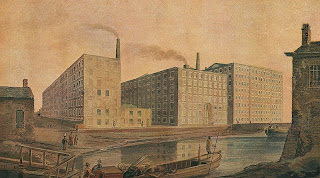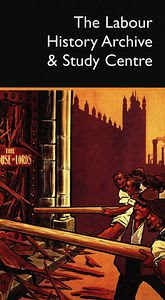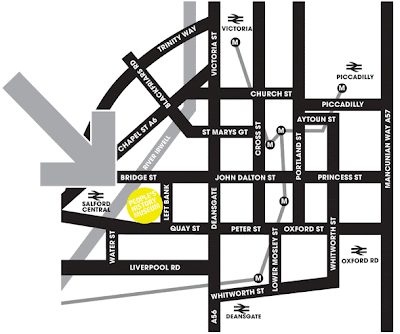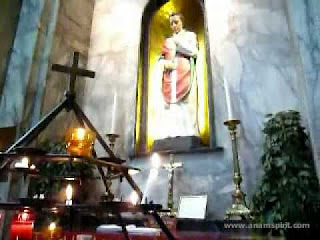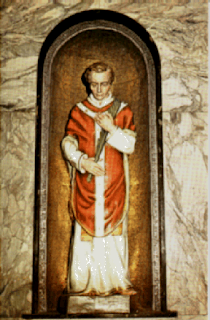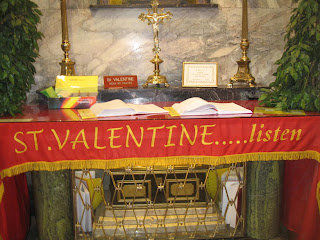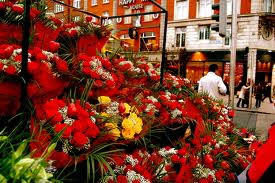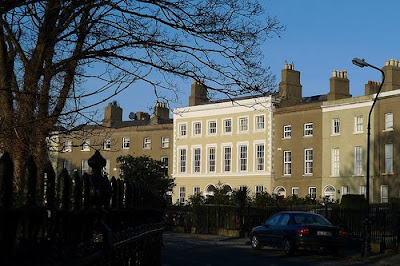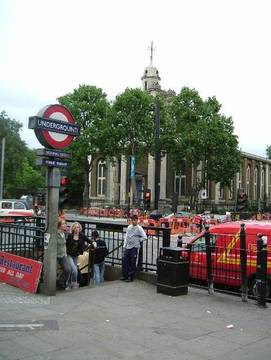 Bethnal Green Tube Station with St. John's Church in the background.
Bethnal Green Tube Station with St. John's Church in the background.The worst tragedy on London Underground was in 1943 during World War II in East London at Bethnal Green Tube Station. This was an extension to the Central Line which had not been completed when war broke out and the unfinished station was taken over by London County Council to be used as an Air Raid Shelter during the Blitz of London by the Luftwaffe. On March 3rd. 1943 the largest loss of civilian life in a single non-military incident during World War II, happened in the East End of London. 173 people perished at Bethnal Green tube station. They were crushed to death by the weight of their own bodies. 62 of the dead were children.
Alf Morris’s fighting spirit is intact - though his hearing is not what it used to be. He is trying to raise money for a memorial for the victims of “the worst civilian disaster of the Second World War,” according to the Trust of which Alf is chairman. Some 300 people were crushed into the stairwell of Bethnal Green tube station and 173 men, women and children died. Over 90 were injured. In the two years since it has been running, the Stairway to Heaven Memorial Trust has raised £70,000. It needs £650,000 to build the memorial. Alf estimates he is one of around 6 to 10 survivors left.
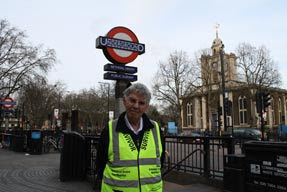 Alf Morris wearing a "survivor" waist coat
Alf Morris wearing a "survivor" waist coatThe Bethnal Green Tube shelter disaster took place on the evening of Wednesday March 3, 1943. 173 people died in a terrifying crush as panic spread through the crowds of people trying to enter the station's bomb shelter in the East End of London. However, no bomb struck and not a single casualty was the direct result of military aggression, making it the deadliest civilian incident of World War Two.
The East End, with its industry and docks, had been a target for German bombers since the Luftwaffe had failed to establish air superiority in the Battle of Britain. Furthermore, the East End was seen as a barometer of British civilian morale. So, even though the Blitz had ended almost two years ago in May 1941, bombing raids and sirens was still an everyday part of life for East-enders as Germany and Britain carried out tit-for-tat raids in an attempt to demoralise civilian populations. Bethnal Green Underground station, as one of the few deep-level stations in the East End, was an obvious choice for a huge public bomb shelter. Situated in a densely populated urban area, the shelter had at times held 7000 people, and contained 5000 bunks.
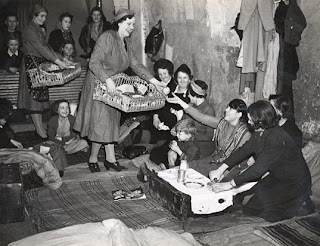
The Bethnal Green disaster was one of a number of tragedies at London Underground stations during World War II. Balham underground station in Wandsworth, South London was the site of a catastrophic bombing during October 1940. A fragmentation bomb exploded at street level creating a large crater which a bus subsequently drove into, penetrating a water pipe. Water and debris flooded into the station causing the deaths of 111 people and numerous injuries. The attack, which has since been portrayed in popular culture, such as in the 2007 film ‘Atonement’, was one of several fatal disasters during the air raids of the World War II.
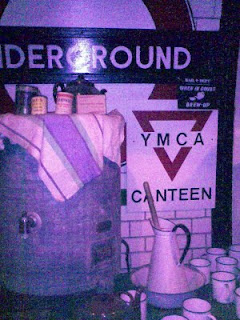
The deep level of underground stations created ideal refuge for the thousands of Londoners who sought shelter during attacks by German aircraft. While regarded as safe, several incidents resulted in civilian casualties. One of the most damaging attacks was on Bank station in January 1941. A bomb directly impacted upon the ticket stall of the underground station, taking the lives of 56 people, injuring 69 and causing considerable damage to the building. The station was forced to close for two months and a bridge implemented over the crater to allow traffic onto the roads. Some 20 civilians were also killed by a bomb blast while taking shelter in Marble Arch station in September 1940.

Through both the First and Second World Wars, London's transport system and its staff played an important part in keeping the city moving. Their contributions went well beyond the normal call of duty. During the First World War, drivers took buses to France, transporting troops to the Western Front. Women worked as 'conductorettes', making their first forays into the male preserve of the bus garage.
Women played a much larger role during the Second World War, replacing male staff who had joined the armed forces. Many women took factory jobs doing war work, including aircraft construction as London Transport facilities were turned to the war effort. Amazingly, the Tube was able to keep running throughout the war, despite providing an underground home every night for thousands of Londoners during the Blitz.

London Transport (LT) played a crucial role in the Home Front of WW2. The transport system operated whilst sustaining severe damage through enemy bombardment. Much of the correspondence between LT and the Government refers to the financial and material resources available. Deep level shelters were created and made available not only for the general public but also munitions factories and government agencies. LT's 'Works' (e.g. Acton Works), which were usually used for the production and maintenance of rolling stock continued to do this, but also formed munitions factories - including forming a major part the London Aircraft Production. The LT fleet of buses and coaches were used for the mobilisation of troops, particularly when the American troops entered the war - some being converted to ambulances.
Staffing was drastically altered. Many staff joined the Armed Forces, and served at home in the 84th (LT) Anti-aircraft regiment. Those who remained working in London as 'reserved personnel' took on many additional responsibilities and found themselves working alongside increasing numbers of women who filled the vacancies - which in turn altered the nature of labour records such as Trade Union agreements, Rules and Regulations, Training and Personnel. By 1942 the total number of staff was 76,263 of which some 15,500 were women (of which 11,500 were employed to release men for the Services). The total of staff employed with the Services was 20,448.
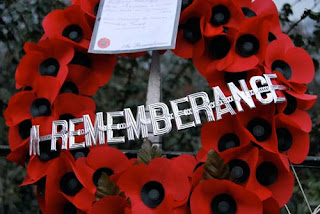
Throughout the War, London Transport suffered heavy losses in London as well as on active service. In the 1944 Annual Accounts & Reports, the total from the outbreak of hostilities were: 548 staff killed whilst on active service, 463 prisoners of war; 179 killed and 1,609 injured whilst working for the Board with an additional 222 killed and 907 were injured whilst off duty. The high loss of staff due to the Blitz indicates the devastation London Transport faced in the War and the difficulties faced in retaining services. By 1942, 2 officers and 44 staff had been awarded honours by the King. By 1944 the total was 74, including 29 appearing in the New Years Honours Lists. Indeed it is a token of the regard and respect felt for the sacrifice of London Transport Staff during World War II that for many years they were the only civilian organisation to march in the Armistice Day Parade by the Cenotaph in London on Remembrance Sunday.
http://daithaic.blogspot.com/2009/11/armistice-day-2009-end-of-generation.html On 3 March 1943 a crowd of people entered Bethnal Green tube station which was used at the time as an air-raid shelter. After the searchlights went on and an anti-aircraft battery a few hundred yards away in Victoria Park launched a salvo of a new type of anti-aircraft rockets the crowd surged forward. Someone tripped on the stairs causing many others to fall. 300 people were crushed into the stairwell within a few seconds, 173 of them died and over 90 were injured.
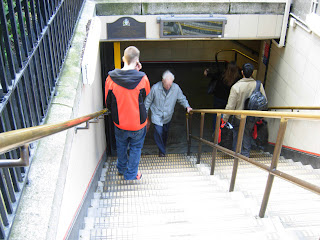 Station Entrance with plaque
Station Entrance with plaqueDuring the winter of 1940-41 the pounding of London had been relentless during the Blitz, with the city being hit 57 nights running at one time. Then on 29th December 1940 the 'Second great Fire of London' occurred as firebombs rained down on the capital. Air raid sirens went off regularly, but quite often it was a false alarm, people just got used to going down the shelters for the night just in case it was another raid. However, most Andersen or Morrison Shelters situated in back gardens were cramped, with little air, no light and a chamber pot for a toilet. So, many preferred to shelter in the Underground.
Bethnal Green was a new station as the Central Line had been extended from Liverpool Street in 1936, but work had been interrupted by the outbreak of War. The Tube was big, light and there was a community spirit with group sing-alongs, tea was dispatched from large urns and there was even a library. With the track not yet laid, there was plenty of room with up to 5000 bunks and a further 2000 people could be accommodated. So, many East Enders preferred to go down the station.

Although things had been quieter of late, on the night of 3rd March 1943 there was some concern as we had bombed Berlin quite heavily two nights earlier and people were expecting reprisals. With the sound of the Siren and the closure of the cinema, 3 buses had just disgorged nearby and their passengers dashed for the shelter. A woman carrying a baby tripped and fell as she went down the steps to the platform. A man tripped over her and a domino effect started. At the top of the stairs came shouted warning of bombs falling and when a different deafening sound was heard they thought it was a new kind of bomb (it turned out to be a new, secret, anti-aircraft gun being tested in Victoria Park near by).
People pushed more quickly into the shelter in a panic. The way was blocked but still people poured down. There were no handrails in the middle, no white edgings on the steps and no police on duty. It was dark and the steps were slippery from the rain. Around 300 people were wedged into the stairway – an area measuring approximately 15 x 11 feet. By the time they were pulled out 27 men, 84 women and 62 children had died of suffocation. Over 60 of the survivors needed hospital treatment. The tragedy was that there was no air raid or bombs dropped that night in the East End, it was just the sound of the new gun that had been secretly placed nearby and tested for the first time that night that caused the panic.

According to the official statement by the Ministry of Home Security: "According to accounts so far received, shortly after the air-raid Alert sounded, substantial numbers of people were making their way as usual towards the shelter entrance. There were nearly 2000 in the shelter, including several hundred who had arrived after the Alert, when a middle-aged woman, burdened with a bundle and a baby, tripped near the foot of a flight of 19 steps which leads down from the street. This flight of steps terminates on a landing. Her fall tripped an elderly man behind her and he fell similarly. Their bodies again tripped up those behind them, and within a few seconds a large number were lying on the lower steps and the landing, completely blocking the stairway. Those coming in from the street could not see what had taken place and continued to press down the steps, so that within a minute there were about 300 people crushed together and lying on top of one another covering the landing and the lower steps.
 South east view of proposed memorial
South east view of proposed memorial"By the time it was possible to extricate the bodies it was found that a total at present estimated at 178 had died and that a further 60 were in need of hospital treatment. Statements from a large number of eye-witnesses and members of the police and Civil Defence services make it clear that there was no sign of panic before the accident on the stairs. No bombs fell anywhere in this district during the evening. Preliminary reports received by the Home Secretary and Minister of Home Security indicate that police, wardens, soldiers, W.V.S. and civilians worked hard and well to rescue the victims. Mr. Morrison has instituted the fullest inquiries to establish in greater detail what took place and to see whether any structural or administrative weaknesses have been brought to light"
To prevent loss of morale in the British people it was decided not to release news of the disaster. There were reports in newspapers but the location was not mentioned and the true magnitude was suppressed. It was not until two years later that an inquiry was held and several factors were found to have caused the chaos. Among the main causes was the lack of proper supervision by the Air Raid Police, inadequate lighting (due to the blackout?) the fact that the handrails had not yet been installed and the lack of any crash barriers. The last two, no doubt, were caused by lack of council funds and the shortage of metal due to the salvaging for the war effort. It was the largest loss of civilian life of the war. After the tragedy new handrails were installed on the steps down to the station. Each step was marked with white paint.
Many of the victims were buried in Tower Hamlets Cemetery, which was cleared by members of the Drapers Company with help from the Friends of Tower Hamlets Cemetery in time for the 60th anniversary.

 The Stairway to Heaven Memorial
The Stairway to Heaven MemorialThe proposed and long overdue memorial to these forgotten victims is an inverted stairway at Bethnal Green Tube Station with the victims names inscribed on the steps. The memorial known as “The Stairway to Heaven” has been designed by local architecture practice Paticas Architecture, with initial help from Jens Borstelmann. They have therefore designed a massive bronze cast of the staircase, which will appear to float alongside the stairs where the people actually died, with 173 small beams of light will represent those who lost their lives. The memorial will vividly describe the historical facts of the Bethnal Green tragedy and will provide shelter form the rain as well as illumination for people entering or exiting the station. It will create a landmark at an important junction on an Olympic Route. Full planning permission has now been granted by the London Borough of Tower Hamlets for the Memorial to be built. Now all that is needed is to raise the money. For details of the fund raising and more information see the appeal site from which I’ve also used part of the material for this piece. Please give your support to this worthy cause.
http://www.stairwaytoheavenmemorial.org/As well as having a song written about it, the disaster is commemorated with a plaque that can be found at Bethnal Green station's southeast entrance on the corner of Cambridge Heath Road and Roman Road, above the step where the first woman fell. It reads:
 Commemorative PlaqueIn Memory of the 173 Men, Women and Children
Commemorative PlaqueIn Memory of the 173 Men, Women and Children
who lost their lives on the evening of
Wednesday 3rd March 1943
descending these steps to Bethnal Green
underground air raid shelter
Not forgotten Eastbound Platform today
Eastbound Platform todayToday the station is a fine example of the typical "New Works Programme 1935 - 1940" style adopted by London Transport for its new tube stations. Extensive use is made of pale yellow tiling, originally manufactured by Poole Pottery. This has been replicated during the 2007 modernisation although several panels of original tiling were retained on the platforms. The finishes include relief tiles, showing symbols of London and the area served by the London Passenger Transport Board, designed by Harold Stabler. The station entrances, all in the form of subway access staircases to the subterranean ticket hall, all show the design influences of Charles Holden, the consulting architect for London Transport at this time.
See also;
http://daithaic.blogspot.com/2008/04/give-my-regards-to-55-broadway.html

